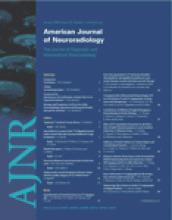Abstract
BACKGROUND AND PURPOSE: Endovascular embolization is an increasingly common method to treat intracerebral arteriovenous malformations (AVM). To date, however, published data are rather scarce, especially with regard to true procedure-related complications and their causes. The purpose of our study was to evaluate treatment safety and correlate anatomic results with clinical outcome by using MR imaging, including diffusion-weighted (DWI) and perfusion imaging (PI).
METHODS: We performed 50 endovascular procedures in 21 patients. Most AVMs were supratentorial, Spetzler-Martin grades II–IV. MR imaging was scheduled within 1 week before and 3 days after each treatment. MR imaging findings were correlated to digital subtraction angiography, procedure reports, and the clinical course. Outcome was graded according to the modified Rankin scale (mRS) 3–6 months after treatment.
RESULTS: In this study, 104 MR imaging examinations were performed; mean interval between the endovascular procedure and posttreatment MR imaging was 28 hours. Nine adverse events occurred in 7 patients during 8 procedures (16%), one causing a permanent deficit. New lesions were noted on MR imaging after 22/50 procedures. Ischemic lesions in 22% of the procedures, frequently located perinidally. Most lesions were small, frequently asymptomatic, and reversible (18/23). Four hematomas were found. Subacute hemorrhages developed from a vasogenic edema on 2 occasions. New lesions, including hematomas, developed between treatments in 4 patients, mainly because of progressive occlusion of the nidus or draining veins. PI overestimated the AVM nidus on most occasions, and transient worsening of the PI pattern was noted in 2 patients. Treatment-related mortality and morbidity were 0% and 14.2%, respectively (mRS 1–2).
CONCLUSIONS: Endovascular procedures are rather safe but are associated with more ischemic events and followed by less hemodynamic disturbances than previously understood. Adverse procedural events and new MR imaging lesions were generally asymptomatic and most often transient, if symptomatic. Most lesions would not have been verified without MR imaging. DWI and PI were most useful to detect and understand the cause of various complications. The most clinically important complications were caused by late venous occlusions.
- Copyright © American Society of Neuroradiology












